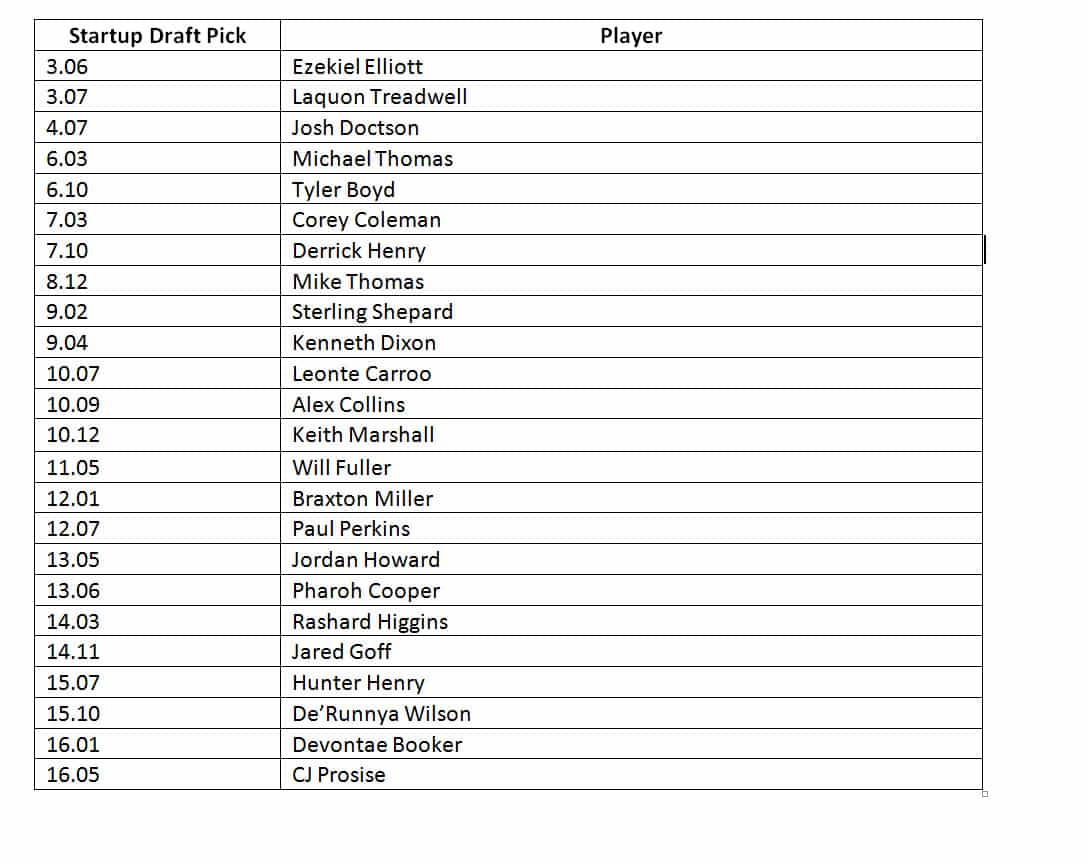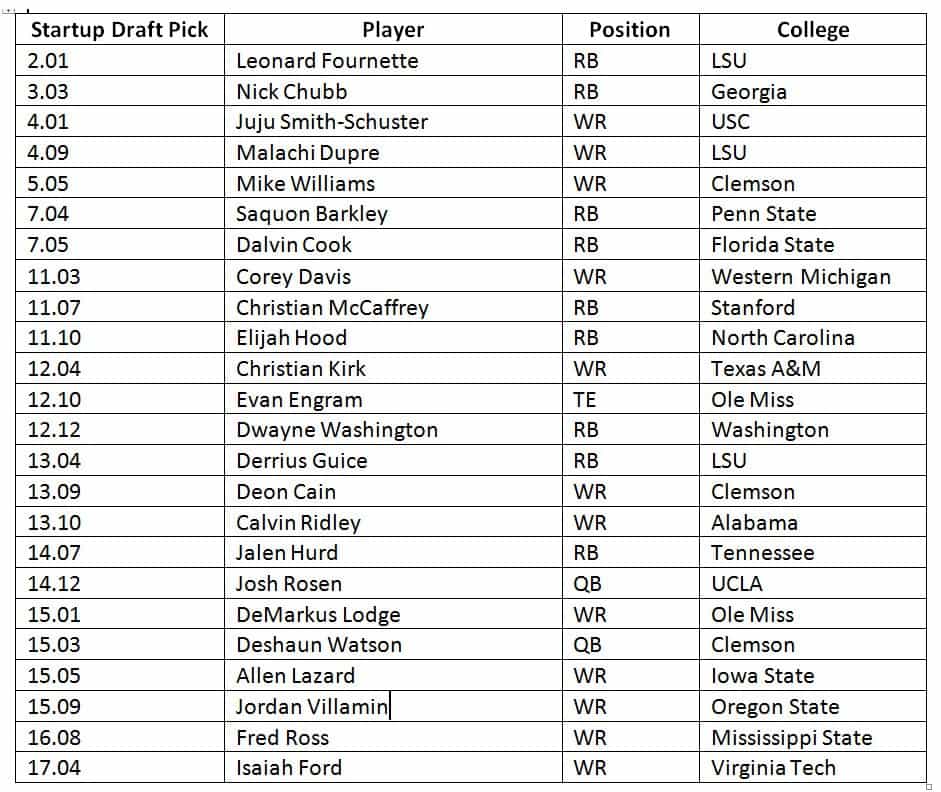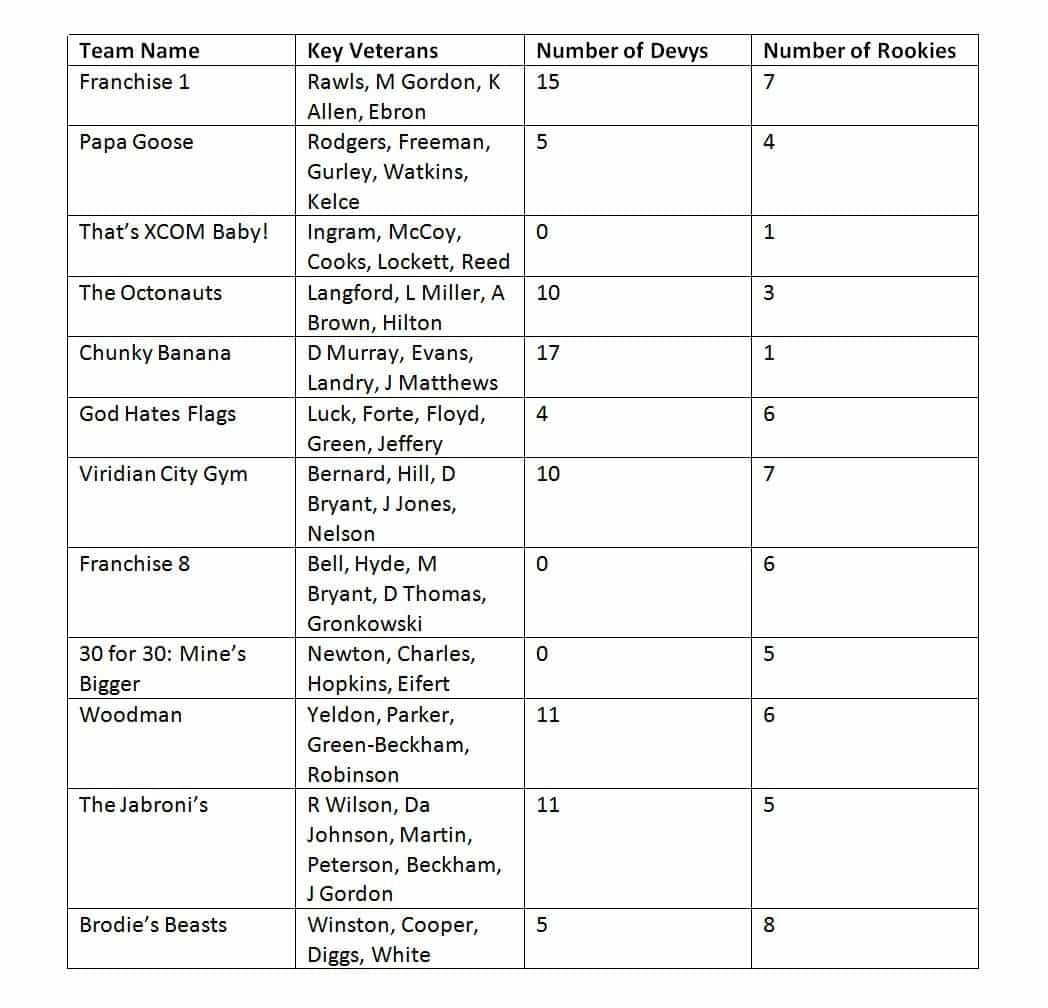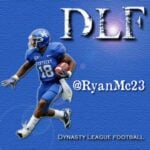Keeping Dynasty Weird – The Reddit Dynasty League
Let’s be honest. Startup dynasty drafts are not easy. To truly build a successful team, the startup draft is your chance to lay the foundation, whether your goal is to contend from Day One, build around youth and upside or somewhere in between. Not only do you have to formulate your own draft strategy in anticipation of the draft, but you also have to do your homework on the other members of the league. When any type of wrinkle is added to a league, it can send shockwaves to those typical draft plans.
Over the past couple of weeks, I’ve been monitoring a startup dynasty draft in which those shockwaves were plentiful. I began getting some questions via Twitter about how to value developmental players in a startup draft. Immediately, my interests were piqued. Soon, I was refreshing this draft page as if I was eagerly awaiting making my own pick.
This new dynasty league, formed from Reddit users, included veterans, incoming rookies and devy (college) players, all in the same draft. It is difficult enough to decide when to take current NFL players when drafting a new team, when the same decisions have to be made with rookies and college players as well, the challenge is multiplied. The remainder of the league’s rules and settings are fairly standard, though it is important to note there is only one starting running back required and there are 34 roster spots per team.
Most devy leagues place some type of limit on the number of college players who can be rostered. This can be done through the use of a separate draft devoted to devy players or by requiring all devy players to be held on a taxi squad with limited spots. That is not the case in this startup draft though. There was no limit in the number of devy players a single team could draft, as long as each team could maintain a starting lineup. Some teams took this idea to the extreme, while others completely ignored devy players.
[am4show have=’g1;’ guest_error=’sub_message’ user_error=’sub_message’ ]
Rookies
When holding a starting dynasty draft this time of year, there are a few ways to handle the incoming rookie class. First, a league might choose to hold a completely separate rookie draft after the NFL Draft. I advise against this as I think it creates an unfair balance in the league from the start. Another option is to make rookie draft picks available in the startup draft. This means you could draft the Rookie 1.01 pick with a mid-third round startup pick and the actual rookie draft would again be after the NFL Draft. Finally, rookies could be included in the startup draft. Many do not like this considering there is so much information we do not yet know about these young players, most importantly are their NFL Draft position and their eventual NFL team. I actually kind of like the added risk and challenge of this format, but recognize it is not for everyone.
Let’s look at the order the top 24 rookies were taken in this startup draft.

- We’ll get to the devy players soon, but I was surprised to see two college players chosen before any of the 2016 rookies were drafted. Typically, the top rookies will be drafted in the mid-second round, making Ezekiel Elliott and Laquon Treadwell excellent values in the mid-third round.
- The overall order of the rookies is pretty standard based on current mock drafts and projections. Sterling Shepard, Will Fuller and Braxton Miller were nice values, all being taken outside the top eight rounds.
- Often times, rookie quarterbacks will be drafted earlier in a startup draft than they will in rookie drafts, in comparison to their fellow rookies. That was not really the case here though with Jared Goff coming off the board as the twentieth overall rookie, but both Carson Wentz and Paxton Lynch falling outside the top 24.
- Let’s take a look where the top players went in comparison to others at their respective position. Elliott was of course the first rookie running back off the board and was the sixth back drafted, overall. Only Todd Gurley, Le’Veon Bell, David Johnson and (spoiler alert!) a pair of college running backs, were taken before the former Ohio State back. We’ll see more of this as Elliott should battle Johnson and Devonta Freeman to hold down the RB3 spot in drafts and rankings in the coming months.
- Treadwell was further down his position list, being selected as the twenty-third receiver. This is similar to what we saw in the February DLF ADP, but I still expect Treadwell to rise in value and draft position in the next few months. Some wideouts taken before him that he could overtake include TY Hilton, Randall Cobb, Kevin White, Martavis Bryant and Kelvin Benjamin.
- Goff was taken as the QB18, behind Matt Ryan and Andy Dalton. Former Arkansas tight end Hunter Henry was the TE18, being selected right after Maxx Williams.
- In all, 59 rookies were selected, far exceeding the typical rookie draft.
Devys
As I mentioned earlier, it is rare to find a league in which you can essentially draft and roster as many developmental players as you choose. This resulted in a total of 88 devy players being selected, which represents over 20 percent of the total players drafted. Let’s look at the top 24 devy players drafted and exactly where they were chosen.

- Because it’s becoming more and more difficult to project how these college stars will transition to the NFL, it is probably not fair to criticize the order in which these players came off the board. With that said, sophomore running back Derrius Guice looks like a steal as the 14th player drafted. An argument can be made Guice could be drafted as high as fifth in a devy draft with all college players available.
- The current crop of college quarterbacks is bleak. This helps the value of UCLA sophomore Josh Rosen, who looks like the best pro prospect available. Of course, Deshaun Watson has sky high potential too, but is a different type quarterback than Rosen and has had some injury issues in his first two years at the collegiate level.
- The real story is how the top seven players were valued in comparison to the NFL’s current veterans and incoming rookies. I mentioned it earlier, but both SEC running backs Leonard Fournette and Nick Chubb were selected before any rookie in the class of 2016. Trust me, I’m a huge fan of each of these players, but drafting them thirteenth and twenty-seventh, respectively, seems a bit steep. Fournette was drafted ahead of Brandin Cooks and a large group of aging stud receivers, including AJ Green, Dez Bryant and Demaryius Thomas, among many others. He doesn’t belong much lower on the list, but the 2.01 is a bit high, even for this ageist.
- Chubb is an even tougher case, considering the severe leg injury that ended his 2015 season. Chubb was drafted as the RB4, behind Gurley, Bell and Fournette, and ahead of David Johnson. Considering the injury and the year’s wait until Chubb crashes the NFL, I would likely choose another direction.
- My top ranked devy player, Juju Smith-Schuster, came off the board at 4.01 as the top devy wide receiver. For comparison, he was selected after Donte Moncrief and John Brown and before Tyler Lockett and Jeremy Maclin. For me, this feels about right for the USC wideout.
- Next, four other devy players were in the next four rounds and then there was nearly a four four round span before the next devy player came off the board.
Team by Team Analysis
As with any startup dynasty draft, there were a wide variety of strategies employed in this unique draft. Let’s take a look at what the teams look like now.

At this point, it goes without saying this league is a unique kind of challenge for the hardest of hard core dynasty owners!
[/am4show]
- DLF’s April 1QB Trade Value Chart - April 24, 2024
- Monday Mocks: Expert 2024 Rookie Mock Draft - April 22, 2024
- Monday Mocks: 2024 Landing Spots - April 15, 2024


































































